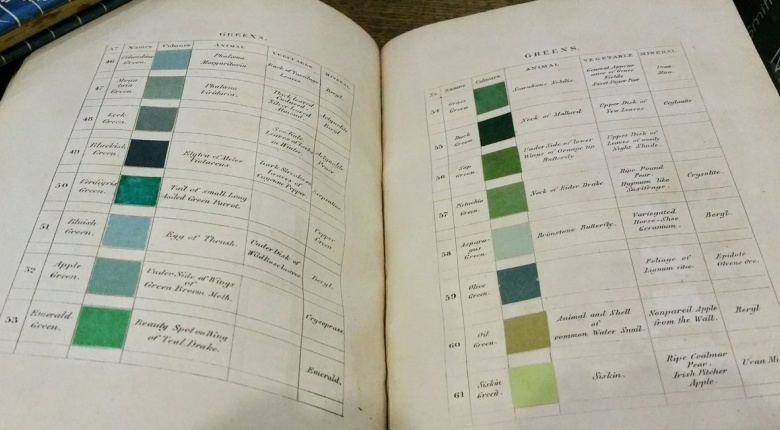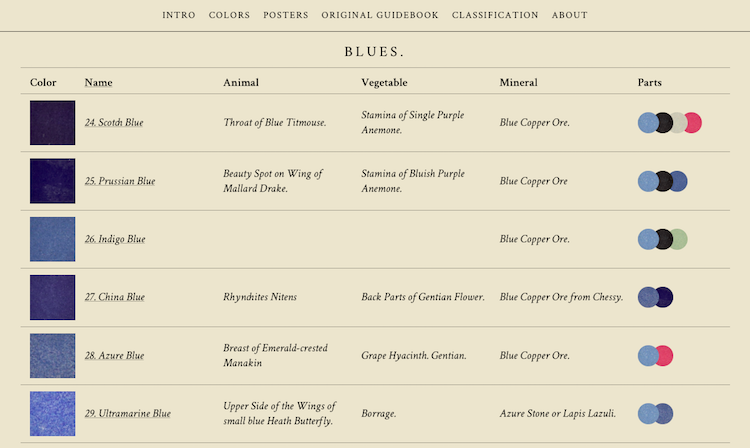Werner's nomenclature of colours
The Pantone Color Institute has been known worldwide since 1963 as the standard language for color communication. But before this, there was a universal "Werner's nomenclature of colours", adapted to zoology, botany, chemistry, mineralogy, anatomy and art.
The catalog, was based on the works of the Prussian geologist Werner, The first was published in 1814, and then reprinted by Smithsonian Books in a pocket volume format. The catalog had blood red, coal black, royal yellow, Chinese blue, mountain green shades and other colors.
The pocket version was included more than a hundred samples of paint with a description and examples of where in nature we can see the color of interest. For example, number 49 is black with green: the elytra of the beetle is a purple undershirt, dark veins on the leaves of cayenne pepper, a serpentine stone the color of snake skin.
During a research expedition in 1831-1836, Charles Darwin used the Werner catalog to accurately describe his notes. Of course, the Werner classifier was not as accurate as modern color palettes. But at one time, the book gave the world a wonderful universal language in which a lot could be said, from the description of human skin and precious stones to the back of the butterfly wing.
This guide showed the countless shades that surround us, and how they fit together. In this book everyone can explore 110 color samples from the publication of the book of 1821.
Each indicated color had a description where it can be found in nature.
There are also images created to accurately illustrate colors in nature.



